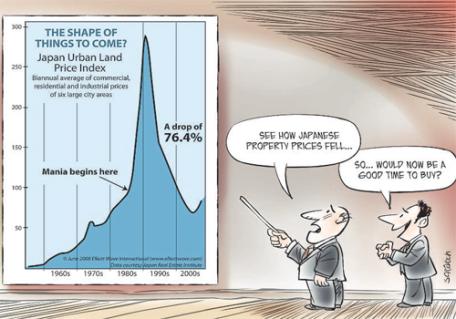Baby boomers and older generations often cite high expectations and the inability to save as the main hindrance to the younger generations’ ability to buy their own home. They go into great detail about how much it has always been a struggle to buy a home, and that if young people decreased their expectations a bought something small they could work their way up the property ladder.
I am one of those generation Ys looking to buy my own home, and from this perspective, it is not quite that simple.
The argument that if younger generations decreased their expectations, and maybe bought a small apartment now, so that they could somehow work their way up the ‘property ladder’, is entirely misleading.
For example, a young couple buys an apartment for $200,000 in lieu of a $400,000 house they really want based on the contemptuous advice of older generations. They imagine that in 10 years they might be able to sell for $350,000, netting a profit of around $100,000 to spend on a larger home (after transfer costs). The problem is that larger homes have also increased in price by 75%, so that the $400,000 house is now $700,000. Buying that dream home has gone from a $400,000 prospect to a $600,000 prospect even with the apparent advantage of being on the property ladder.
The way to benefit from increasing property prices is to buy multiple investment properties, so that you leverage the benefits beyond your single dwelling needs.
Next, we can look into the arguments about spending a little less on luxuries to get a person into a home buying position. Dining out, gadgets, and holidays all seem to get mentioned. But if we look into it, these relatively small expenses are not the main factor – the main factor is income.
A hypothetical future home buyer might spend $200 per week on dining out, ‘gadgets’ (mobile phones etc), and travel. That’s $10,400 per year – maybe $3,000 on a trip to SE Asia, $2,000 on gadgets, $2,000 on dining out, and the balance for other luxury items. Let’s see what that money could have done if it were funnelled into a property buying strategy.
Assuming a starting point with no savings, this hypothetical person (or couple, or family) can save about $58,000 in 5 years assuming they receive 6% on their savings. If they thought they might one day want to live in a home that currently costs $300,000, by the time they save their $58,000 the home is worth $400,000 (at a 6% price growth rate). They now need $80,000 for their deposit. They continue saving instead of splurging and in another 5 years they have $137,000 saved. The home is now worth $535,000. They have enough for a deposit, but the repayments on their home and associated ownership costs are now around $900/week.
So after ten years of saving, living life without those luxuries that make it so much more enjoyable, they are in no better a position than before.
I’ll leave you with a question. If you bought a home for $100,000 in 1990, and the market his risen so that it is now worth $600,000, how much better off are you?
Subscribe to:
Post Comments (Atom)

No comments:
Post a Comment